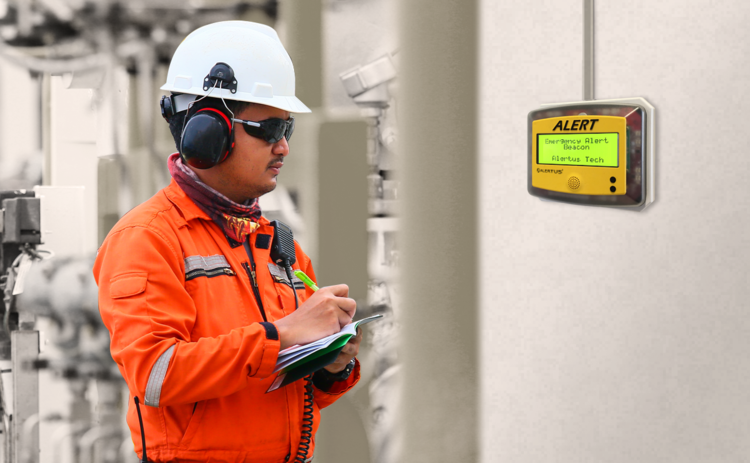Emergency Communication Challenges and Solutions for Manufacturing Facilities
Emergencies in manufacturing and industrial facilities are often inevitable. Some, however, have significant ramifications like jeopardizing business continuity and workplace safety. Many industrial organizations operate in large, open areas, which when combined with high noise, make emergency notification via cell phone or overhead announcement ineffective—or in some situations even impossible.
Facility managers and their staff need to have the peace of mind that when an emergency happens, they can send and receive alerts no matter where they're located. A comprehensive Mass Notification System (MNS), such as the Alertus System, provides a solution that is flexible and powerful enough to accommodate loud environments and large footprints.
Below, we will address three common communication challenges for manufacturing facilities and some helpful solutions.
The Challenge: Loud Environment
In manufacturing, you are often working in a noisy environment with various pitches in different zones. That makes hearing and responding to emergency alerts difficult. To ensure workplace safety, it is critical that emergency personnel can quickly send emergency alerts to their intended audience without fail.
The Solution: Audible/Visual Notification
Visual notification devices such as LED Marquees and Digital Signage are great, cost-effective solutions for loud and noisy areas. When activated, emergency alert messages are shown and can be easily read from a distance. With these intelligent devices, you can instantly notify your indoor and outdoor employees about emergencies or regular announcements.
Additional products like the Alertus Alert Beacon® and strobes are ideal for overcoming loud environments. These devices flash and sound immediately to grab the attention of those who might not be able to hear an emergency alarm.
The Challenge: Large Footprint
Manufacturing facilities cover wide areas, both indoors and out. For large, open areas, giant voice systems are still the most efficient way to deliver emergency notifications. However, unrehearsed, live voice announcements can be challenging and stressful during a crisis.
The Solution: Clear and Intelligible Indoor/Outdoor Notification
Effective outdoor crisis communication in large-area manufacturing plants and industrial parks are best served by giant voice notification using text-to-speech (TTS) technology. Alertus offers breakthrough TTS technology embedded in a High Power Speaker Array (HPSA) to deliver clearly enunciated emergency notifications. Alertus can override existing outdoor HPSA or design a new system to cover outdoor areas with siren tones and clear voice messages.
And now, Alertus’ newest Mobile HPSA offers the same alerting capabilities as the Alertus HPSA—with the added bonus of functioning on a mobile trailer. The mobile HPSA can simply be pulled with a standard trailer hitch to your desired communication area and set up by one person within 15 minutes after arriving on scene.
With no installation required and minimal technical experience needed, your facility can use the Alertus Mobile HPSA to rapidly deploy emergency communications and announcements.
The Challenge: Business Continuity
Business continuity and worker safety take center stage during an emergency event. And for facilities that operate 24/7, any downtime due to an emergency could harm your organization’s finances and impact company morale.
The Solution: Mass Notification System
Preparedness is key to making sure your facility stays on track in the aftermath of an emergency event. The best solution to mitigate business disruption is to invest in an MNS that can compliment your business emergency preparedness plan.
An MNS can instantly send emergency alerts to all or select groups, as well as notify them when a crisis is over so regular business operations can continue. Having a robust MNS in place when an emergency occurs gives your facility a better chance of preserving operations, data, and systems. With an MNS, you can also help automate emergency communications using pre-set alerts to ensure everyone gets the information they need to follow your business continuity plan.
Be sure to remain proactive about your emergency preparedness plans and drills. Additionally, it is important to conduct annual or quarterly training on emergency preparedness and response. By conducting annual drills, your employees will know exactly what to do during an emergency and be familiar with the emergency alerting devices that are being activated.
You can learn more about how implementing an MNS can benefit your facility by checking out the replay of our recent webinar, “Mass Notification Best Practices for Industrial & Manufacturing Facilities.”



